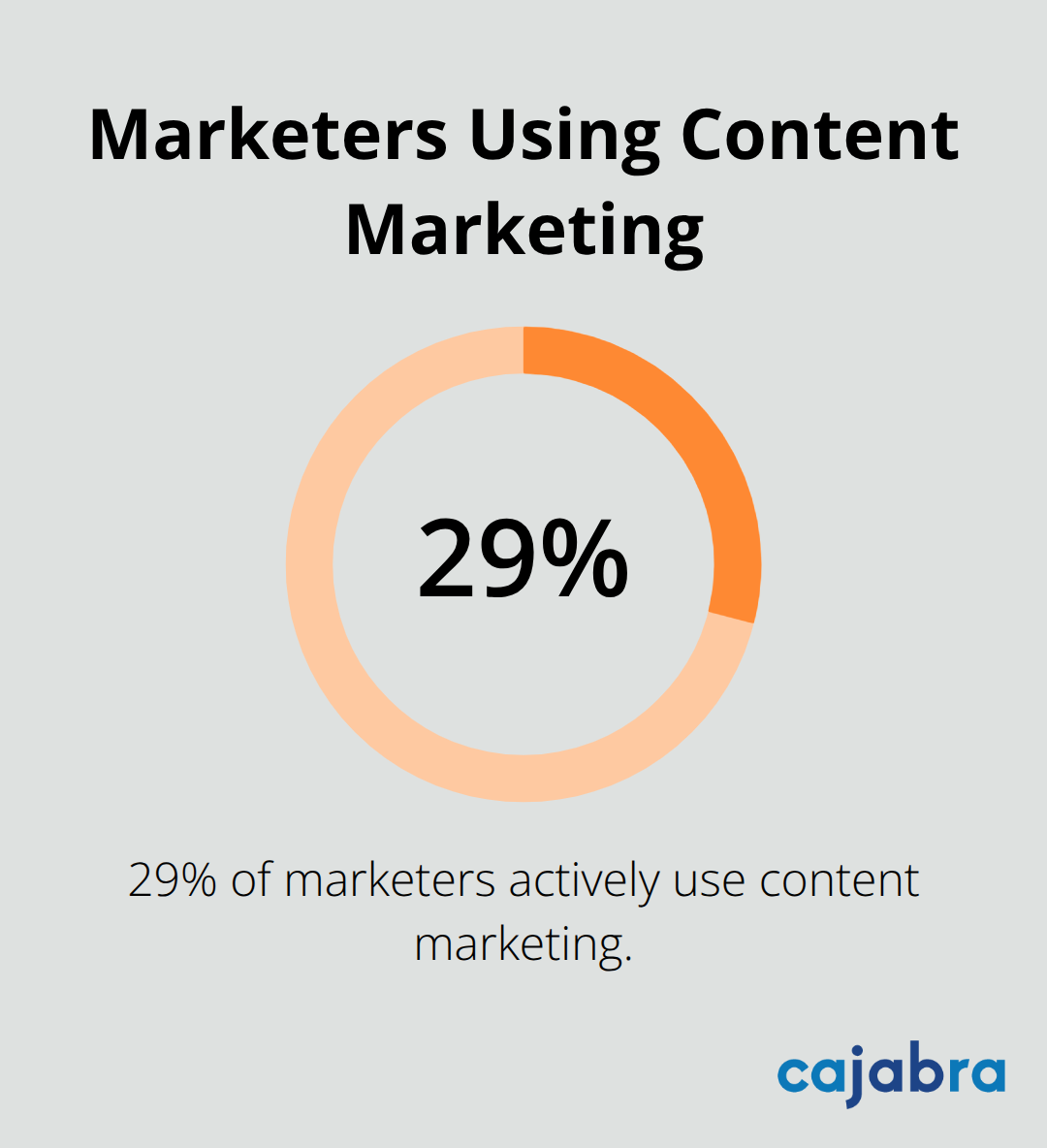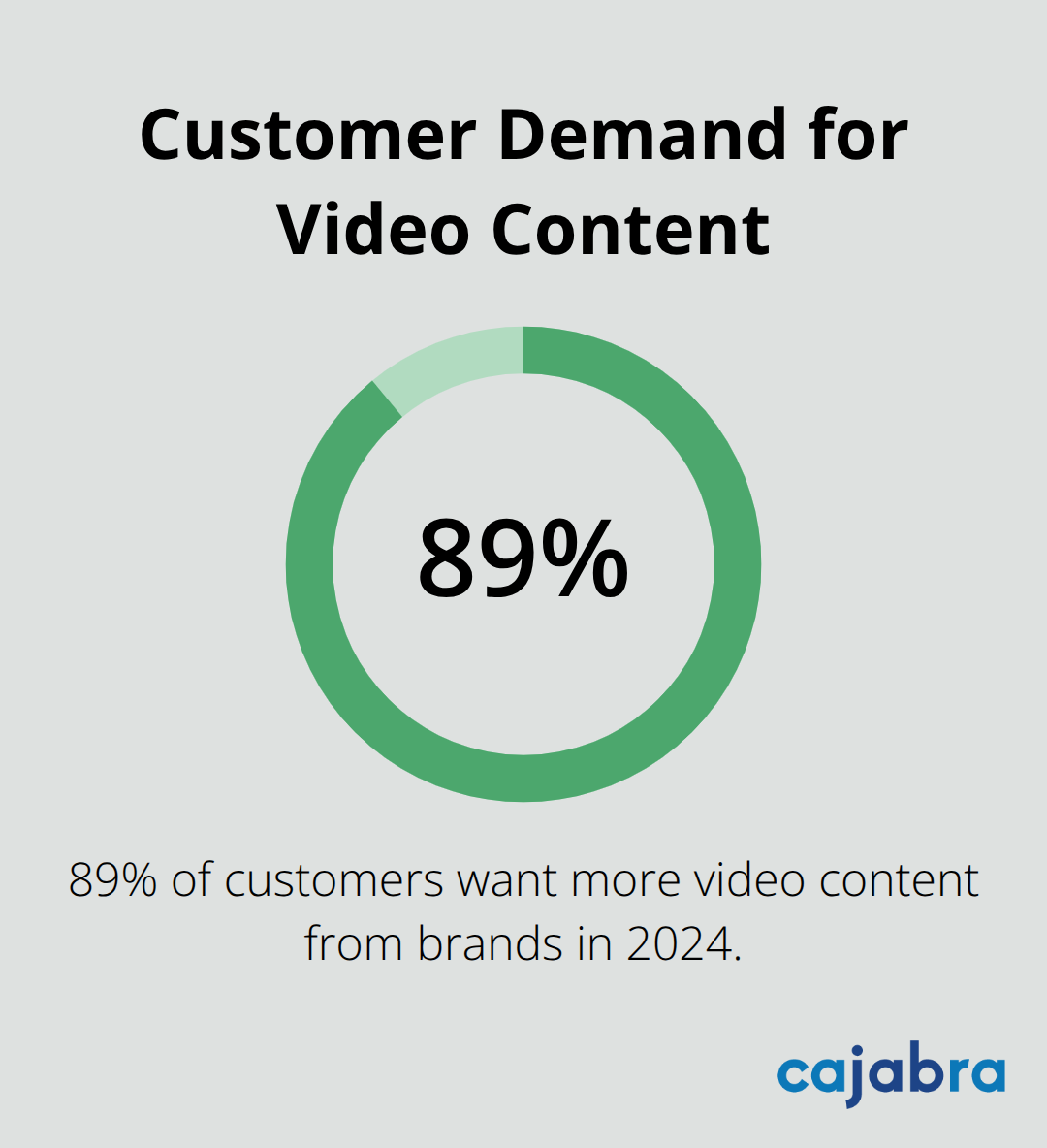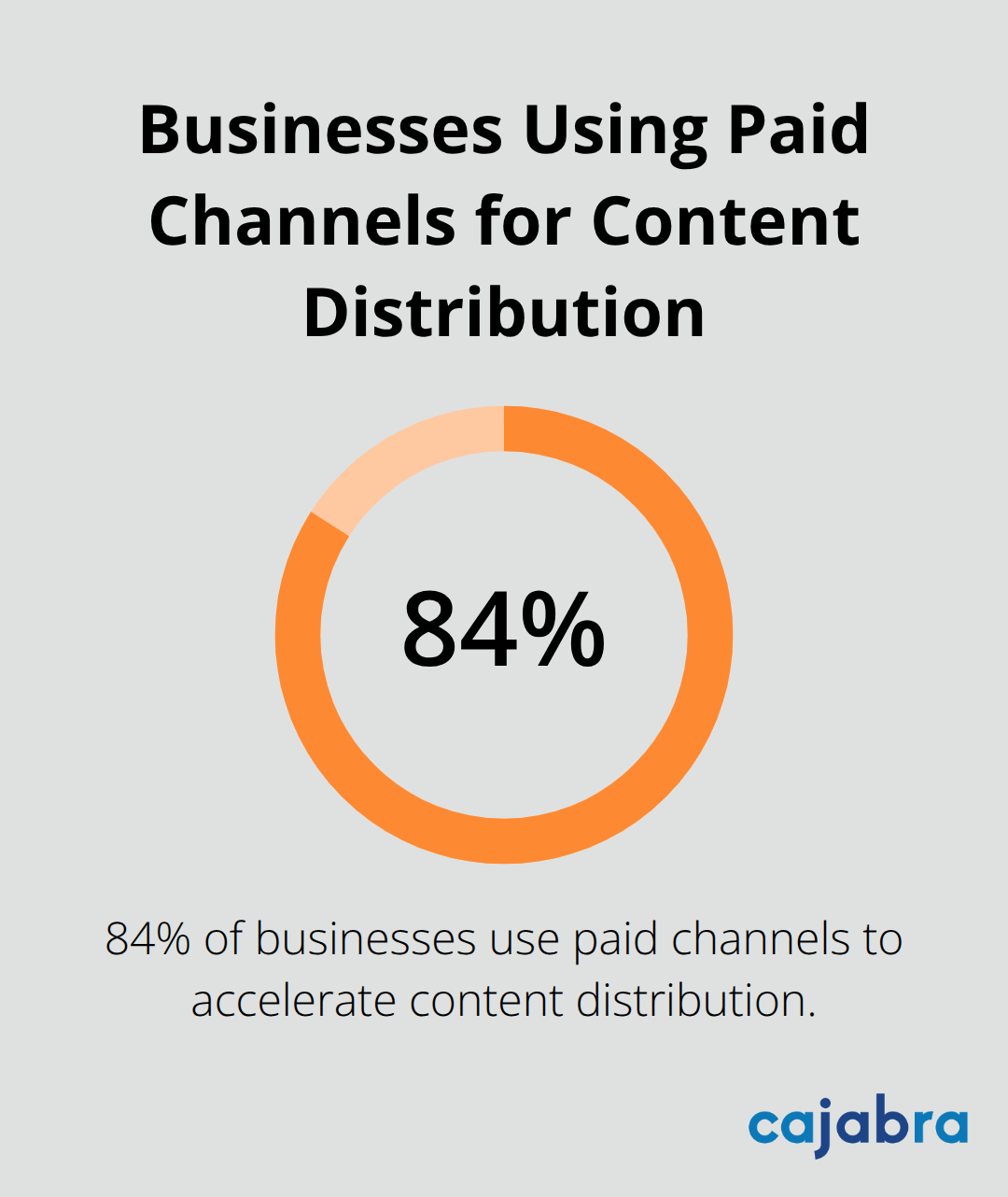
Small businesses struggle to create content that connects with their audience and drives real results. Most owners spend hours brainstorming only to produce generic posts that get ignored.
We at Cajabra, LLC know that effective small business content ideas come from understanding your customers deeply and addressing their specific challenges. The right approach transforms your content from noise into a powerful growth engine.
Most small businesses create content without truly knowing who they're talking to. This backwards approach wastes time and money while it delivers poor results. Smart business owners start with deep customer research before they write a single post.
Age and location tell you nothing about what keeps your customers awake at night. HubSpot research shows that 29% of marketers actively use content marketing. Dig into customer support tickets, survey responses, and sales call notes to find problems that repeat. Interview your best customers about their biggest challenges before they found your business. Track which products they buy together and when they typically make purchases. This data reveals content opportunities that generic demographic profiles miss completely.

Your competitors probably create the same content everyone else does. Semrush data shows 58% of businesses use AI for content research, but most still miss obvious gaps. Analyze the top 10 competitors in your space and catalog their content themes for three months. Look for questions customers ask that no one addresses properly. Check their social media comments for concerns that remain unresolved. Most competitors focus on product features while they ignore implementation challenges, troubleshooting guides, or industry-specific applications (these gaps become your content goldmine).
Social media vanity metrics lie to you constantly. Likes and followers mean nothing if they don't convert to customers. Focus on metrics that predict business growth: click-through rates to your website, email signups from social posts, and direct messages that ask about your services. Content Marketing Institute research reveals that 90% of content marketers use social media for distribution, but few track the right metrics. Monitor which content types generate the most qualified leads and double down on those formats. Comments that ask specific questions indicate high buyer intent (while generic praise suggests low-quality traffic).
Once you understand your audience deeply, you can create content marketing for small businesses that speaks directly to their needs and drives real business results.
Behind-the-scenes content works because people buy from businesses they trust, and transparency builds that trust fast. Nike generates massive engagement when they show their design process, from initial sketches to final product tests. Small businesses can apply this same strategy without huge budgets.
Document your daily operations, show how products get made, or film quick tours of your workspace. The key is consistency over production value. Wyzowl research shows 89% of customers want more video content from brands in 2024, and behind-the-scenes footage costs almost nothing to produce while it delivers authentic connection.

Educational content that solves specific customer problems outperforms promotional posts by massive margins. B2B marketers face challenges creating the right content for their audience, with 40% citing this as their primary concern this year.
Focus on step-by-step solutions to problems only your customers face. A local plumber gets more leads from a video that shows how to stop a specific type of leak than from generic maintenance tips. Document your customer support calls for three weeks and turn the most common questions into detailed how-to content.
User-generated content amplifies this effect because customers trust peer experiences more than company claims. Encourage customers to share their success stories, then repurpose these testimonials across all platforms (this approach costs nothing but generates the highest conversion rates because prospects see real results from real people).
Customer interviews provide authentic testimonials that resonate with potential customers. Showcase your company culture to foster connection and relatability. Share insights about your production process to enhance brand authenticity.
These content types form the foundation of effective inbound content marketing, but success depends on proper planning and execution tools.
Content planning without the right tools wastes hours every week and produces inconsistent results. Hootsuite brings scheduling, content creation, analytics, and social listening to one place, making it a comprehensive social media management solution. Buffer and Later offer simpler alternatives for small businesses, while CoSchedule provides advanced calendar management that integrates with WordPress and email marketing tools. Choose one platform and use it consistently rather than jump between multiple tools that create more confusion than efficiency.
One piece of content should generate at least five different posts across platforms. Transform a single blog post into Instagram carousel slides, LinkedIn articles, Twitter threads, and YouTube shorts without losing the core message. Semrush research shows 76% of content marketers use AI to draft content copy, but most miss the repurposing opportunity completely.
Record yourself as you explain a blog post concept for 60 seconds and you have video content for three platforms. Turn customer testimonials into quote graphics, case study posts, and success story videos. This approach multiplies your content output while it maintains quality and consistency.
Most small businesses track meaningless vanity metrics instead of numbers that predict revenue. Focus on three metrics that matter: conversion rates from content to email signups, cost per lead from each content type, and customer lifetime value from content-generated leads.
Google Analytics shows which blog posts drive the most qualified traffic, while social media analytics reveal which content formats generate actual business inquiries. Content Marketing Institute data shows 84% of businesses use paid channels to accelerate distribution, but organic content that converts consistently outperforms paid promotion in long-term ROI (this advantage compounds over time as search rankings improve).

Test different content formats for 30 days, measure results against revenue, then double down on winners while you eliminate content that generates engagement without conversions.
Successful small business content ideas start with deep customer research and end with measurable revenue growth. The businesses that win focus on solving real problems through educational content, behind-the-scenes transparency, and authentic customer stories rather than chasing vanity metrics. Your next step is simple: pick one content type that resonates with your audience and create it consistently for 30 days.
Track conversion rates, not likes. Measure leads generated, not followers gained. This focused approach beats scattered efforts across multiple platforms every time (long-term content success requires treating content as a business system, not a creative hobby).
Document what works, eliminate what doesn't, and scale the winners. Most small businesses fail because they create content randomly instead of strategically. We at Cajabra, LLC help accounting firms transform their marketing approach through systematic content strategies that generate retainer-based clients through our JAB System™. Content marketing works when you treat it like the revenue-generating business function it should be.



